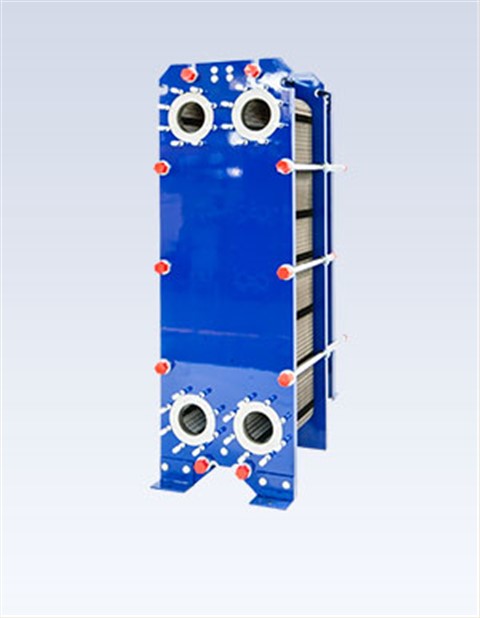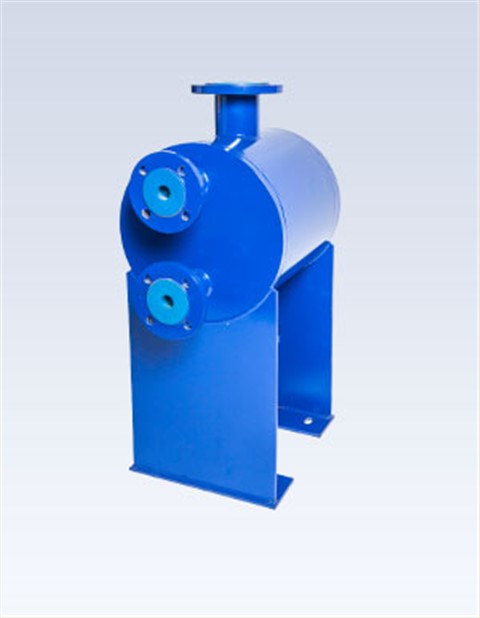-
Technical Principle: Synergistic Optimization of Heat Conduction and Convective Heat Transfer
The integrated plate heat exchanger unit is centered around a plate heat exchanger, achieving efficient heat exchange through dual mechanisms of heat conduction and convective heat transfer:
-
Heat Conduction: High-temperature heat media (such as steam or hot water) transfer heat to the metal plates, which in turn conduct the heat to the low-temperature cold media (such as circulating water).
-
Convective Heat Transfer: The cold media forms turbulence within the corrugated channels between the plates, enhancing the contact area with the plates and improving heat transfer efficiency. For example, a herringbone corrugated design can raise the heat transfer coefficient to 6000-8000 W/(㎡·K), which is 3-5 times higher than traditional tubular heat exchangers.
-
Intelligent Control: Equipped with temperature and pressure sensors and intelligent control modules, the unit uses a PID algorithm to dynamically adjust the electric control valve opening, achieving precise control of supply water temperature (error ≤ ±0.5℃).
-
Structural Innovation: Modular and Compact Integrated Design
The unit adopts a modular skid-mounted structure, integrating the plate heat exchanger, circulation pump, makeup water pump, temperature control valve group, electrical control cabinet, and other components into a compact frame, with the following advantages:
-
Space Optimization: The space required is only one-third of that of a tubular heat exchanger, with over 50% savings in installation space, making it especially suitable for space-constrained scenarios such as small heating stations in urban centers or HVAC systems in high-rise buildings.
-
Material Upgrade: The main body is made of 304/316L stainless steel, which has significantly better corrosion resistance than carbon steel, extending the service life to over 15 years and reducing maintenance costs by 40%.
-
Removable Plates: The plates are connected by sealing gaskets and support quick disassembly for cleaning. Maintenance time is reduced to under 2 hours, and annual operation time is increased to over 98%.
-
Performance Breakthrough: Comprehensive Upgrades in Efficiency, Energy Saving, and Environmental Protection
-
Heat Efficiency Improvement:
-
Heat transfer coefficient reaches 5000-8000 W/(㎡·K), with heat recovery efficiency exceeding 90%, saving 15%-20% more energy compared to traditional equipment.
-
In a 600MW supercritical unit, after application, annual power generation increases by 48 million kWh, with circulating water utilization improving by 15%, saving 2 million tons of water.
-
-
Intelligent Control:
-
Supports multi-period timed switching, automatic backup pump switching, and automatic switching between power frequency/inverter modes for unattended operation.
-
Equipped with a 7-inch touch screen to display real-time system status, thermal parameters, and fault alarms, supporting remote monitoring and data storage.
-
-
Environmental Protection:
-
Variable frequency pumps and vibration-reduction design keep noise below 50 dB, meeting urban area environmental noise standards.
-
Supports waste heat recovery technology, reducing CO? emissions by over 100,000 tons annually in industrial scenarios such as steel mills and cement factories.
-
-
Application Scenarios: Core Equipment for Energy Efficiency Upgrades Across Multiple Industries
-
District Heating:
-
As the core equipment of a heat station, it transfers high-temperature water from thermal power plants or boiler rooms to users, meeting heating needs for residential areas, schools, hospitals, etc.
-
After introduction by a heating company in a city, heating efficiency improved by 25%, and energy waste was reduced by 30%.
-
-
Central Air Conditioning:
-
Used as an evaporator or condenser in combination with water chillers and cooling towers to achieve cooling or heating of indoor air.
-
In malls, hotels, and similar environments, it supports high flow requirements, with variable frequency control reducing energy consumption by over 20%.
-
-
Industrial Waste Heat Recovery:
-
Recovers waste heat from steel mill high-temperature flue gas and cement factory kiln tail gas for preheating materials or heating domestic water.
-
After application by a large chemical enterprise, annual savings of 50,000 tons of standard coal were achieved, resulting in an economic benefit increase of 30 million RMB.
-
-
New Energy Sector:
-
Transmits heat in solar thermal power generation to aid efficient use of renewable energy.
-
In hydrogen energy storage systems, it cools high-pressure hydrogen gas (70 MPa), boosting system efficiency by 25%.
-
-
Future Trends: Deep Integration of Green and Intelligent Technologies
-
Material Innovation:
-
Development of corrosion-resistant and high-temperature-resistant new materials (e.g., high-chromium ferritic stainless steel) to further enhance equipment lifespan and performance.
-
-
Structural Optimization:
-
Adoption of vortex heat membrane technology to enhance fluid turbulence, with heat transfer coefficients expected to exceed 10,000 W/(㎡·K).
-
-
Intelligent Upgrade:
-
Integration of AI algorithms for self-adaptive optimization of heat exchange parameters, achieving an additional 10%-15% annual energy savings.
-
Development of self-cleaning plate technology, extending maintenance cycles to over 3 years and reducing operational costs.
-
-
System Integration:
-
Combining with ORC waste heat power generation systems to realize combined heat and power (CHP), reducing carbon emissions.
-
Establishing distributed energy networks in industrial parks to enhance comprehensive energy utilization efficiency.
-


 Food grade plate heat exchanger
Food grade plate heat exchanger Plate And Shell Heat Exchanger
Plate And Shell Heat Exchanger